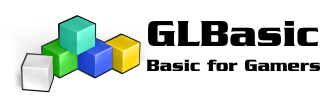I have been slowly collecting items to make my own arcade machine so to speak just for the hell of it & now am another step closer to having all I need to build it.
These are the items I have acquired so far
All the above items I managed to get for free, the TV was given to me by a friend who replaced it with a 50" Lcd/Plasma, same with the xbox which he gave me a while back when his kids moved over to a 360 & PS3. The car seats came from another friend who was a car dealer that decided to break & sell an MGF he had due to the cost of repairing it was not worth it. Almost all the parts sold except the seats & I was toying with the idea of making a "Top Gear" type sofa with them but that never happened but I do use them as gaming seats though
The items that are remaining to get are a steering wheel controller as well as a SFF pc like an old Dell 3100c etc (which I am currently watching one on eBay thats at £1 N/R & 2 days to go).
The reason for an Xbox & a PC is due emulation mainly, the pc will handle the Amiga & MAME side of things as well as remakes that I have accrued over the years, while the Xbox will deal with the 16bit console stuff (Snes, megadrive, Atari 2600 etc). While there is an Amiga & MAME emulator for the Xbox the Amiga side is not as easy to use or as established as the Windows/PC version & MAME is fine for really old games but struggles with some of the later ones. Also my Xbox games are copied onto the HD thanks to the mod.
I have made up adapter cables that allow me to use Amiga/Atari 9 pin digital joysticks on both the PC & Xbox as well as using an Xbox controller on the PC & all works well regarding that. More than likely I will dig out my PICmicro programmer & make an electronic switch box to save the hassle of cable swapping etc.
Luckily having a Dad who's a carpenter will save me a lot of hassle making the frame & base to hold it all in his workshop (also the trade discount on the wood is a huge bonus). I you think of a Sega Rally arcade game cabinet that's the sort of look I will probably go with.
Once I get the wheel controller & the PC then construction will begin
Lee
btw the attached pic is not the seats I have as they are still in my mates unit but are the same type
[attachment deleted by admin]
These are the items I have acquired so far
- 36 inch TV with built in surround (5.1 DTS, Dolby Pro Logic)
- Original Xbox version 1.6 (Clear crystal case) modded by me
- Pair of Half leather car seats from a MGF roadster
All the above items I managed to get for free, the TV was given to me by a friend who replaced it with a 50" Lcd/Plasma, same with the xbox which he gave me a while back when his kids moved over to a 360 & PS3. The car seats came from another friend who was a car dealer that decided to break & sell an MGF he had due to the cost of repairing it was not worth it. Almost all the parts sold except the seats & I was toying with the idea of making a "Top Gear" type sofa with them but that never happened but I do use them as gaming seats though

The items that are remaining to get are a steering wheel controller as well as a SFF pc like an old Dell 3100c etc (which I am currently watching one on eBay thats at £1 N/R & 2 days to go).
The reason for an Xbox & a PC is due emulation mainly, the pc will handle the Amiga & MAME side of things as well as remakes that I have accrued over the years, while the Xbox will deal with the 16bit console stuff (Snes, megadrive, Atari 2600 etc). While there is an Amiga & MAME emulator for the Xbox the Amiga side is not as easy to use or as established as the Windows/PC version & MAME is fine for really old games but struggles with some of the later ones. Also my Xbox games are copied onto the HD thanks to the mod.
I have made up adapter cables that allow me to use Amiga/Atari 9 pin digital joysticks on both the PC & Xbox as well as using an Xbox controller on the PC & all works well regarding that. More than likely I will dig out my PICmicro programmer & make an electronic switch box to save the hassle of cable swapping etc.
Luckily having a Dad who's a carpenter will save me a lot of hassle making the frame & base to hold it all in his workshop (also the trade discount on the wood is a huge bonus). I you think of a Sega Rally arcade game cabinet that's the sort of look I will probably go with.
Once I get the wheel controller & the PC then construction will begin

Lee
btw the attached pic is not the seats I have as they are still in my mates unit but are the same type
[attachment deleted by admin]





 .
. . Also tried the clean project & no joy
. Also tried the clean project & no joy ) I split it out into a function of its own.
) I split it out into a function of its own.

 ).
).